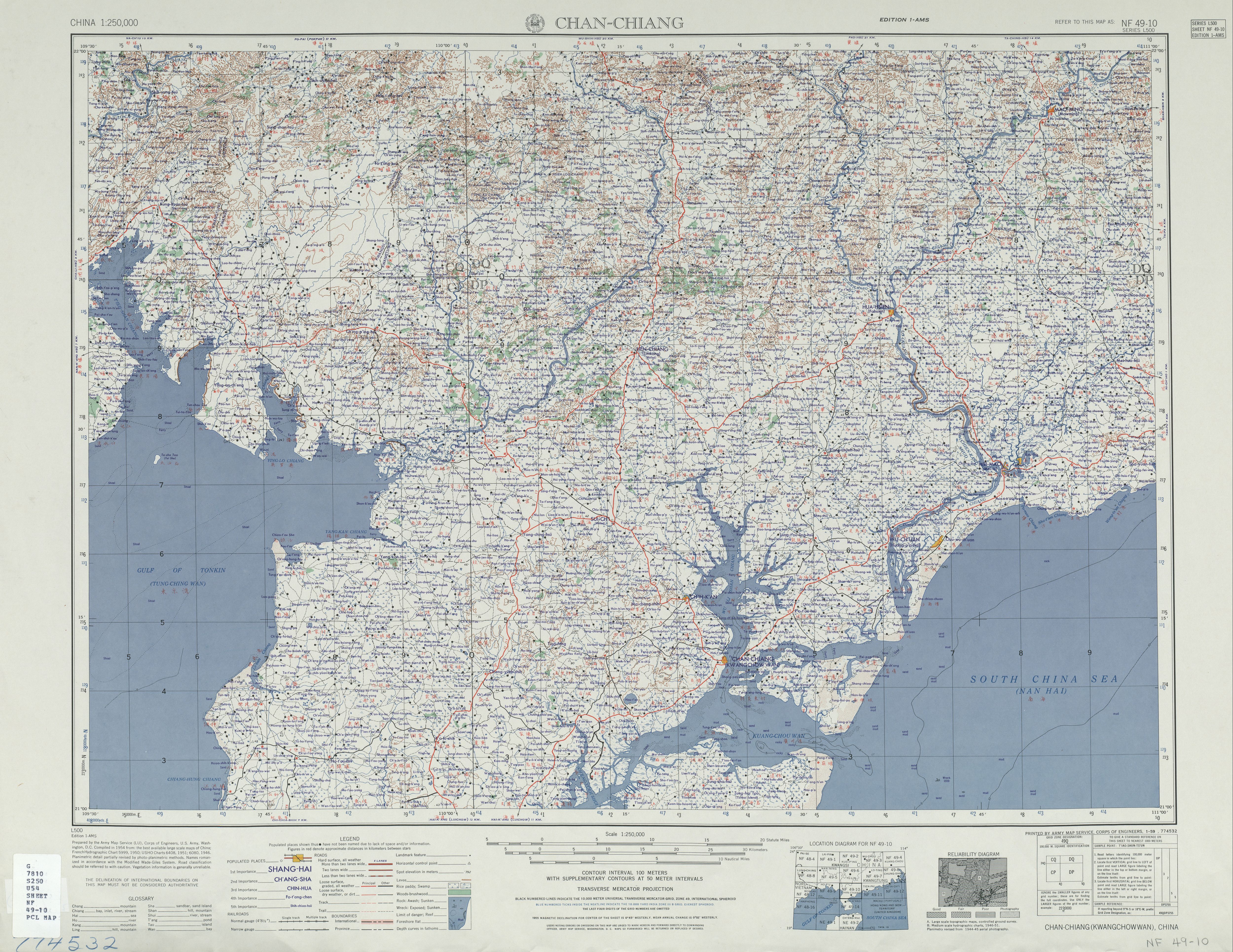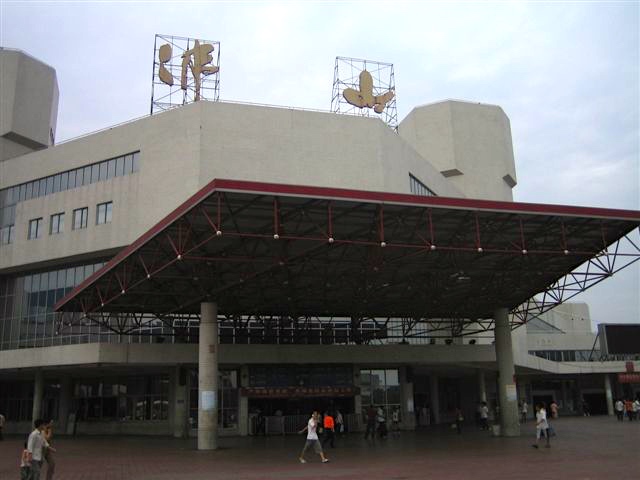|
Guangzhan Expressway
Guangzhang Expressway (广湛高速) connects the cities Guangzhou and Zhanjiang in the Chinese province of Guangdong. The expressway is made up of five different expressways that connects the cities between Guangzhou and Zhanjiang, the include: * Guangfo Expressway (广佛高速) connects the cities Guangzhou and Foshan. * Fokai Expressway (佛开高速) connects the cities Foshan and Kaiping. * Kaiyang Expressway (开阳高速) connects the cities Kaiping and Yangjiang. * Yangmao Expressway (阳茂高速) connects the cities Yanjing and Maoming. * Maozhan Expressway (茂湛高速) connects the cities Maoming Maoming, alternately romanized as Mowming, is a prefecture-level city located in southwestern Guangdong province, China. Facing the South China Sea to the city's south, Maoming city borders Zhanjiang to the west, Yangjiang to the east, and Yunf ... and Zhanjiang. Expressways in China Transport in Guangdong {{PRChina-road-stub ... [...More Info...] [...Related Items...] OR: [Wikipedia] [Google] [Baidu] |
Guangzhou
Guangzhou (, ; ; or ; ), also known as Canton () and alternatively romanized as Kwongchow or Kwangchow, is the capital and largest city of Guangdong province in southern China. Located on the Pearl River about north-northwest of Hong Kong and north of Macau, Guangzhou has a history of over 2,200 years and was a major terminus of the maritime Silk Road; it continues to serve as a major port and transportation hub as well as being one of China's three largest cities. For a long time, the only Chinese port accessible to most foreign traders, Guangzhou was captured by the British during the First Opium War. No longer enjoying a monopoly after the war, it lost trade to other ports such as Hong Kong and Shanghai, but continued to serve as a major transshipment port. Due to a high urban population and large volumes of port traffic, Guangzhou is classified as a Large-Port Megacity, the largest type of port-city in the world. Due to worldwide travel restrictions at the beg ... [...More Info...] [...Related Items...] OR: [Wikipedia] [Google] [Baidu] |
Zhanjiang
Zhanjiang (), historically spelled Tsamkong, is a prefecture-level city at the southwestern end of Guangdong province, People's Republic of China, facing Haikou city to the south. As of the 2020 census, its population was 6,981,236 (6,994,832 in 2010) whom 1,931,455 lived in the built-up (or metro) area consisting of four urban districts: Chikan, Xiashan, Potou and Mazhang. In 2007, the city was named China's top ten livable cities by Chinese Cities Brand Value Report, which was released at 2007 Beijing Summit of China Cities Forum. History Imperial China era During the Qin Dynasty (221–206 BC), the area belonged to Xiang Shire. The imperial government of the Han Dynasty (206 BC−220 AD) set Xuwen County as the administrator of the whole Leizhou Peninsula. It was one of the earliest departure points on the Maritime Silk Road. It was a city port soon after. Great numbers of Putian colonists settled in the Leizhou peninsula, establishing colonies during t ... [...More Info...] [...Related Items...] OR: [Wikipedia] [Google] [Baidu] |
Guangdong
Guangdong (, ), alternatively romanized as Canton or Kwangtung, is a coastal province in South China on the north shore of the South China Sea. The capital of the province is Guangzhou. With a population of 126.01 million (as of 2020) across a total area of about , Guangdong is the most populous province of China and the 15th-largest by area as well as the second-most populous country subdivision in the world (after Uttar Pradesh in India). Its economy is larger than that of any other province in the nation and the fifth largest sub-national economy in the world with a GDP (nominal) of 1.95 trillion USD (12.4 trillion CNY) in 2021. The Pearl River Delta Economic Zone, a Chinese megalopolis, is a core for high technology, manufacturing and International trade, foreign trade. Located in this zone are two of the Chinese city tier system, four top Chinese cities and the List of Chinese prefecture-level cities by GDP, top two Chinese prefecture-level cities by GDP; ... [...More Info...] [...Related Items...] OR: [Wikipedia] [Google] [Baidu] |
Controlled-access Highway
A controlled-access highway is a type of highway that has been designed for high-speed vehicular traffic, with all traffic flow—ingress and egress—regulated. Common English terms are freeway, motorway and expressway. Other similar terms include ''throughway'' and ''parkway''. Some of these may be limited-access highways, although this term can also refer to a class of highways with somewhat less isolation from other traffic. In countries following the Vienna convention, the motorway qualification implies that walking and parking are forbidden. A fully controlled-access highway provides an unhindered flow of traffic, with no traffic signals, intersections or property access. They are free of any at-grade crossings with other roads, railways, or pedestrian paths, which are instead carried by overpasses and underpasses. Entrances and exits to the highway are provided at interchanges by slip roads (ramps), which allow for speed changes between the highway and arteria ... [...More Info...] [...Related Items...] OR: [Wikipedia] [Google] [Baidu] |
Guangfo Expressway
Guangfo Expressway () connects the cities of Guangzhou and Foshan in the Guangdong Guangdong (, ), alternatively romanized as Canton or Kwangtung, is a coastal province in South China on the north shore of the South China Sea. The capital of the province is Guangzhou. With a population of 126.01 million (as of 2020 ... province, China. References Expressways in China Transport in Guangdong {{PRChina-road-stub ... [...More Info...] [...Related Items...] OR: [Wikipedia] [Google] [Baidu] |
Foshan
Foshan (, ), alternately romanized as Fatshan, is a prefecture-level city in central Guangdong Province, China. The entire prefecture covers and had a population of 9,498,863 as of the 2020 census. The city is part of the western side of the Pearl River Delta Economic Zone whose built-up (or metro) area was home to 65,694,622 inhabitants as of 2020 (excluding Hong Kong not conurbated yet), making it the biggest urban area of the world. Foshan is regarded as the home of Cantonese opera, a genre of Chinese opera; Nanquan, a martial art; and lion dancing. Name ''Fóshān'' is the pinyin romanization of the city's Chinese name , based on its Mandarin pronunciation. The Postal Map spelling "Fatshan" derives from the same name's local Cantonese pronunciation. Other romanizations include Fat-shan and Fat-shun. Foshan means "BuddhaMountain" and, despite the more famous present-day statue of Guanyin (or Kwanyin) on Mount Xiqiao, who isn't a Buddha, it refers to a smaller h ... [...More Info...] [...Related Items...] OR: [Wikipedia] [Google] [Baidu] |
Kaiping
Kaiping (), alternately romanized in Cantonese as Hoiping, is a county-level city in Guangdong Province, China. It is located ín the western section of the Pearl River Delta and administered as part of the prefecture-level city of Jiangmen. The surrounding area, especially Sze Yup (), is the ancestral homeland of many overseas Chinese, particularly in the United States. Kaiping has a population of 688,242 as of 2017 and an area of . The locals speak a variant of the Toishan (Hoisan) dialect. History During the Northern Song dynasty (960–1127), Kaiping was under the administration of Xin'an county () Under the Qing (1649), made up part of the commandery of Shiuhing (Zhaoqing). It was promoted to county-level city status in 1993. Administration Administratively, Kaiping is administered as part of the prefecture-level city of Jiangmen. Geography Kaiping's city centre is located on the Tanjiang River, away from Guangzhou, on the edge of the county Kaiping west of the ... [...More Info...] [...Related Items...] OR: [Wikipedia] [Google] [Baidu] |
Kaiyang Expressway
Kaiyang County () is a county of central Guizhou province, China. It is under the administration of Guiyang Guiyang (; ; Mandarin pronunciation: ), historically rendered as Kweiyang, is the capital of Guizhou province of the People's Republic of China. It is located in the center of the province, situated on the east of the Yunnan–Guizhou Plateau, ... City. Transport Kaiyang railway station is the terminus of the Guiyang–Kaiyang intercity railway, opened in 2015. Climate References County-level divisions of Guizhou {{Guizhou-geo-stub ... [...More Info...] [...Related Items...] OR: [Wikipedia] [Google] [Baidu] |
Yangjiang
Yangjiang (, ), alternately romanized as Yeungkong, is a prefecture-level city in southwestern Guangdong Province in the People's Republic of China. It borders Maoming to the west, Yunfu to the north, Jiangmen to the east, and looks out to the South China Sea to the south. The local dialect is the Gaoyang dialect, a branch of Yue Chinese. During the 2020 census, its population was 2,602,959 inhabitants of whom 1,292,987 lived in the built-up (''or metro'') and largely urbanized area comprising Jiangcheng District and Yangdong County. History Under the Qing, made up part of the commandery of Zhaoqing. It was later split off as a separate prefecture in its own right. Administration The prefecture-level city of Yangjiang administers 4 county-level divisions, including 2 districts, 1 county-level city and 1 counties. Yangjiang is located, 2:30 hours from Guangzhou by bus. Notable areas include the Zhapo Beach and Hailing Island near Shapa Town. Economy and culture Yangjia ... [...More Info...] [...Related Items...] OR: [Wikipedia] [Google] [Baidu] |
Yanjing
Ji or Jicheng was an ancient city in northern China, which has become the longest continuously inhabited section of modern Beijing. Historical mention of Ji dates to the founding of the Zhou dynasty in about 1045BC. Archaeological finds in southwestern Beijing where Ji was believed to be located date to the Spring and Autumn period (771–476BC). The city of Ji served as the capital of the ancient states of Ji and Yan until the unification of China by the Qin dynasty in 221BC. Thereafter, the city was a prefectural capital for Youzhou through the Han dynasty, Three Kingdoms, Western Jin dynasty, Sixteen Kingdoms, Northern Dynasties, and Sui dynasty. With the creation of a Jizhou during the Tang dynasty in what is now Tianjin Municipality, the city of Ji took on the name Youzhou. Youzhou was one of the Sixteen Prefectures ceded to the Khitans during the Five Dynasties. The city then became the southern capital of the Liao dynasty and then main capital of the Jin d ... [...More Info...] [...Related Items...] OR: [Wikipedia] [Google] [Baidu] |






